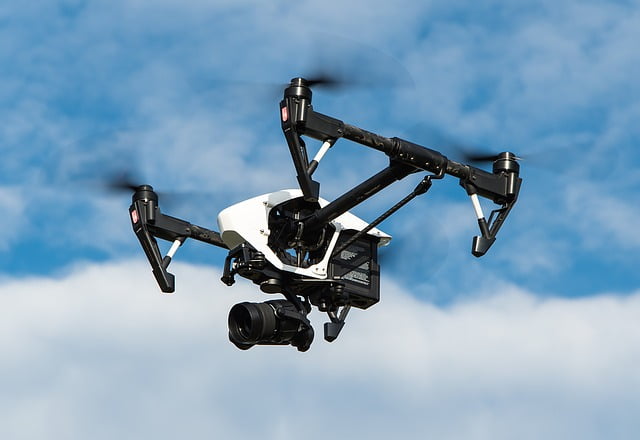You thought you’d heard everything about blockchain and its uses. But just as the cryptocurrency community has taken bleeding-edge innovation up a gear, so too have the blockchain developers, entrepreneurs, and creatives. Beyond fixing broken systems, allowing for real-time record keeping, and wiping out corruption, blockchain could soon be taking to the skies.
What’s Flying Around Above Our Heads?
Well, it rather depends where you live. But if you’re in a major metropolitan area, almost certainly a few hundred drones. As drone technology has taken off and Amazon continues its charge to provide consumers with near-instant delivery, oscillating objects in the sky are becoming more and more common.
Says Max Smetannikov, CIO of Vimana, “Each time a drone changes direction from vertical or horizontal, they adjust their flight path.” And with the growing popularity of both private and commercial, there are now more than 300 categories of drones. They are saving corporations billions of dollars on delivery, marketing, land surveying, and more.
It doesn’t take a rocket scientist to see the implications of this.
“If you saw the drones flying at the start of the South Korean Winter Olympics, that was just the beginning,” Smetannikov laughs.
Airspace regulation changes over jurisdiction. In the United States, drones currently cannot fly above 500 feet, and regulation below that limit remains a gray area. Overcrowded airspace plus unclear guidelines equals a less-than-appealing scenario all around. And it presents a pertinent question: with the number of drones increasing, how can they all be managed?
Vimana plans to engineer an air traffic control system to control each drone. Their customers will not be the buyers of the drones themselves, such as Amazon and DHL, but Smart Cities with urban air mobility programs. “Blockchain allows for an infinite number of data units to be synchronized automatically, allowing us to develop this air system,” he says. The Smart Cities will then charge drone users an airspace tax to circulate.
But is Blockchain Prepared for Such a Feat?
No. Not yet, anyway. “Drones can’t use the blockchain as we have it today, so we came up with a proprietary node system, an IoT-type system. Any drone unit is very small, so it sits on drones and other computer platforms, transmitting to other drones.” When asked about the high computational power issues that often arise with blockchain and IoT, Smetannikov says:
“There’s more than one way to skin a cat. If you engineer the blockchain to the specs you need, you can engineer it to what you want it to do. Explain to engineers that you need underlying ubiquitous broadband and high-speed high capacity, and that is what you’ll get.”
Vimana will be based on not one or two, but three custom infrastructures, according to Smetannikov.
It’s a remarkable project, to be sure. Vimana is, in fact, the only blockchain company currently working in this space. And it’s not without its challenges. Beyond the quantum feat of adapting the technology, the team at Vimana may subject themselves to a slow and painful death by bureaucracy. “A project like ours starts and ends on government regulation,” Smetannikov says.
They’re currently working with 40 government MOUs (Memorandums of Understanding), each with different legislation, cultures, and operating environments.
So, how long will it all take? They expect to conclude the first 500 MOUs within the next five years, although the first test run will be out at an undisclosed destination later this year, taking blockchain to the skies.

